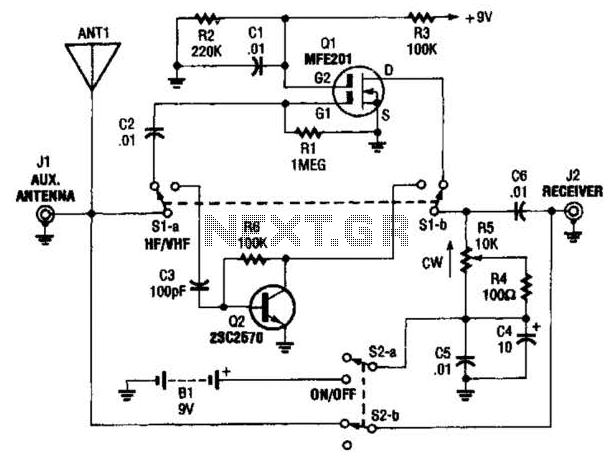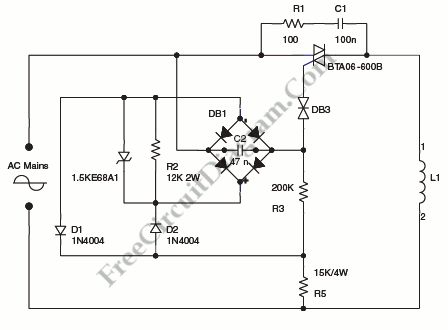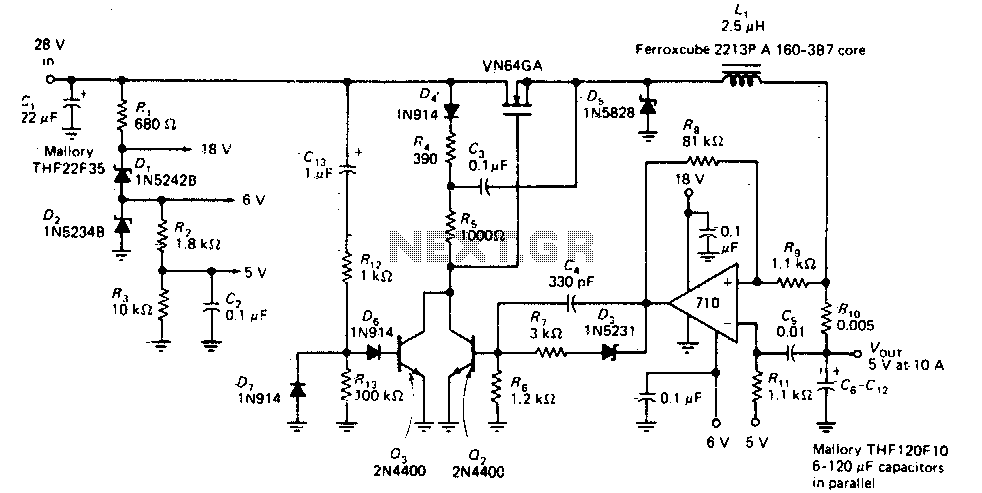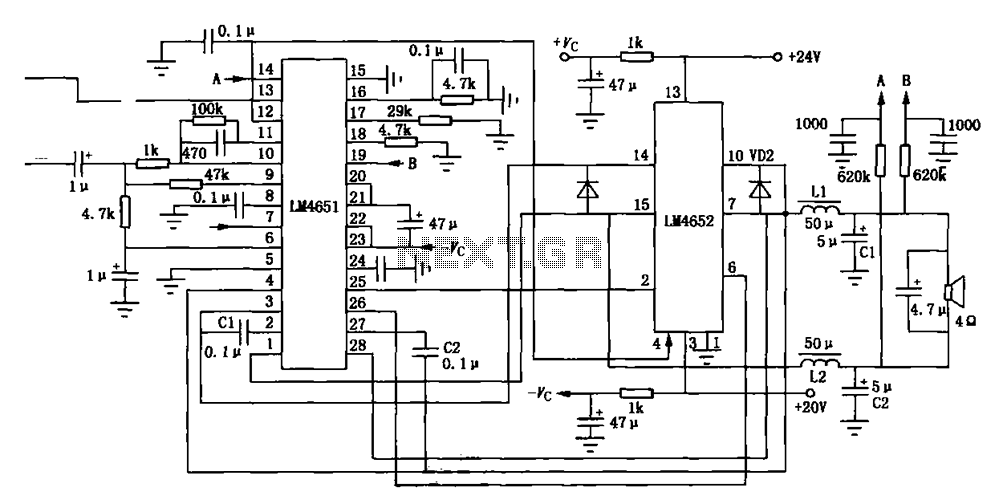
Power Mosfet Switch
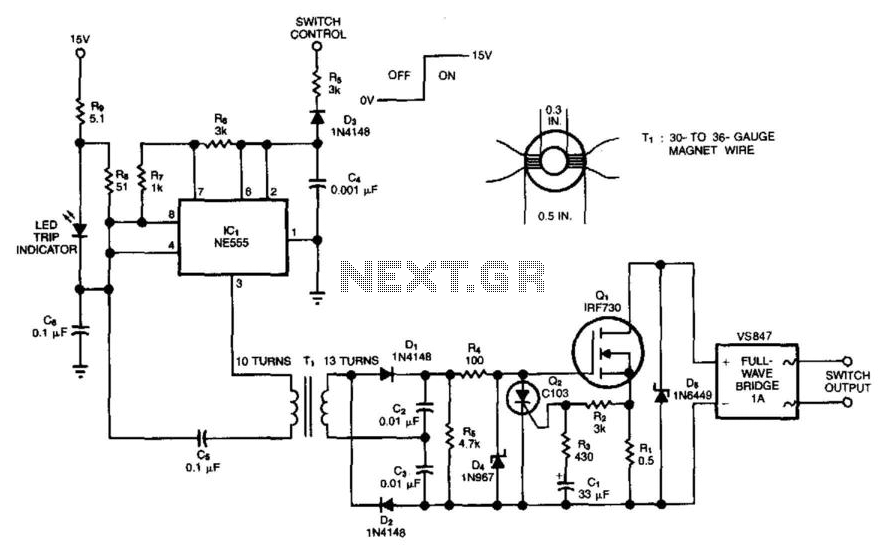
This solid-state switch detects and interrupts an overcurrent condition within 2 microseconds. It allows the circuit to float. IC1 operates at 150 kHz, and the full-wave doubler D1/D2 provides 15 V to the gate of Q1. An overcurrent sensed across R1 triggers Q3, removes gate bias from Q1, and opens the circuit formed by the full-wave bridge and Q1. C1 and R3 enable the circuit to manage surges.
The described solid-state switch is engineered to provide rapid overcurrent protection in electronic circuits. The operation begins with the sensing mechanism that monitors the current flowing through resistor R1. When the current exceeds a predetermined threshold, the voltage across R1 rises, triggering transistor Q3. This transistor acts as a control switch, which, upon activation, cuts off the gate bias to Q1, effectively disconnecting the load from the power source.
The use of a full-wave bridge rectifier comprising diodes D1 and D2 ensures that the circuit can efficiently convert AC input into a stable DC output. The output voltage of 15 V is crucial for driving the gate of Q1, which is typically a MOSFET or an IGBT, allowing for rapid switching capabilities. The frequency of operation, set at 150 kHz, indicates that the circuit can handle high-speed applications, making it suitable for various industrial and consumer electronics.
Capacitor C1 and resistor R3 are integrated into the design to provide additional robustness against voltage surges. C1 functions as a decoupling capacitor, smoothing out voltage spikes that could potentially harm sensitive components. R3 serves to limit the inrush current during transient conditions, ensuring that the circuit remains stable under fluctuating load conditions.
Overall, this solid-state switch design exemplifies modern approaches to circuit protection, utilizing rapid response times and efficient power management techniques to enhance the reliability and durability of electronic systems. This solid-state switch senses and interrupts an overcurrent condition within 2 /is. II allows the circuit to float. IC 1 runs at 150 kHz and full-wave doubler D1/D2 provides 15 V to the gate of Ql. An overcurrent sensed across Rl triggers Q3, removes gate bias from Ql, and opens the circuit formed by the full-wave bridge and Ql. CI and R3 allow the circuit to handle surges.
The described solid-state switch is engineered to provide rapid overcurrent protection in electronic circuits. The operation begins with the sensing mechanism that monitors the current flowing through resistor R1. When the current exceeds a predetermined threshold, the voltage across R1 rises, triggering transistor Q3. This transistor acts as a control switch, which, upon activation, cuts off the gate bias to Q1, effectively disconnecting the load from the power source.
The use of a full-wave bridge rectifier comprising diodes D1 and D2 ensures that the circuit can efficiently convert AC input into a stable DC output. The output voltage of 15 V is crucial for driving the gate of Q1, which is typically a MOSFET or an IGBT, allowing for rapid switching capabilities. The frequency of operation, set at 150 kHz, indicates that the circuit can handle high-speed applications, making it suitable for various industrial and consumer electronics.
Capacitor C1 and resistor R3 are integrated into the design to provide additional robustness against voltage surges. C1 functions as a decoupling capacitor, smoothing out voltage spikes that could potentially harm sensitive components. R3 serves to limit the inrush current during transient conditions, ensuring that the circuit remains stable under fluctuating load conditions.
Overall, this solid-state switch design exemplifies modern approaches to circuit protection, utilizing rapid response times and efficient power management techniques to enhance the reliability and durability of electronic systems. This solid-state switch senses and interrupts an overcurrent condition within 2 /is. II allows the circuit to float. IC 1 runs at 150 kHz and full-wave doubler D1/D2 provides 15 V to the gate of Ql. An overcurrent sensed across Rl triggers Q3, removes gate bias from Ql, and opens the circuit formed by the full-wave bridge and Ql. CI and R3 allow the circuit to handle surges.
